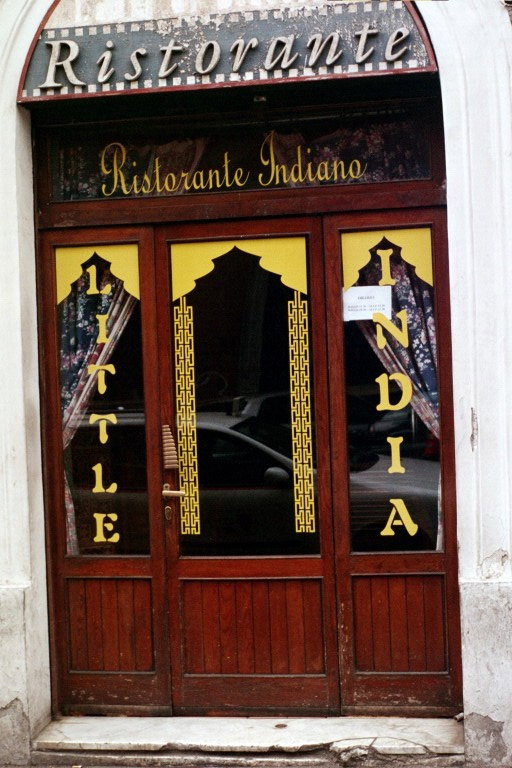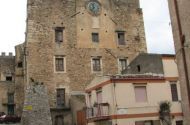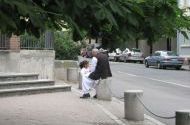Seeing Cities Change: Shameless Promotion of My Books Part I
Seeing Cities Change: Shameless Promotion of My Books Part I
(April 2, 2012)Jerry Krase Carroll Street, Brooklyn 1998
Somethings don't change. Here, at the turn of the 21st Century, is an Italian American village on Carroll Street, Brooklyn near the Gowanus Canal. It is not far from where my wife Suzanne's grandparents, the Giordanos, lived at the turn of the 20th Century.
Seeing Cities Change is one of two of my recently published books that deal in large part with Italy and Italian America.
One of the reasons I have been reasonably quiet on i-Italy during the past six months was having to meet deadlines on several writing projects. The first of two works is Seeing Cities Change: Local Culture and Class from Ashgate, that I recommend for any serious library on urban life and culture.
The “accessible” written text is also richly illustrated with 60 black and white photographs such as those more colorful images included in this shameless promotion.
Although Italy and Italian America as subjects are woven into almost every part of the global urban panorama illustrated in the book, three chapters should be of special interest to i-Italy readers: “Seeing Little Italy Change”; “Polish and Italian Landscapes”; and “Seeing Ethnic Succession in Big Italy.” In my “Traces” Blog here at i-Italy I have written about the dynamics of racial, ethnic, and religious changes at the local as well as national levels in America and Italy. Most recently I addressed the slaughter of innocents in Oslo, Norway by a racist lunatic concerned about how immigrants were changing his country. Resistance to change is a universal human trait when people feel comfortable and perhaps even "protected" in their own social and territorial communities. This is not to say that change is wrong but to say that planners and other authorities should recognize the sources of resistance and work to reduce potential conflict especially through civic education and civil dialogue. As a successful Citizen Journalism Project, Letizia Airos and Ottorino Capelli and the others at I-Italy have done a superb job in creating a platform for timely, well-written, informative, serious, and sometimes entertaining, discussion of such important global issues.
Cities have always been dynamic social environments for visual and otherwise symbolic competition between the groups who live and work within them. Today, diversity of all kinds is increasing and concentrating in them. In recent years the most powerful factors have been ethnic and racial transformations produced by migration and the gentrification of poor and working class areas of the city. I chose to use the recent photo above "Somethings don't Change" to start this essay as a counterpoint to "change."
Cities have always been dynamic social environments for visual and otherwise symbolic competition between the groups who live and work within them. Today, diversity of all kinds is increasing and concentrating in them. In recent years the most powerful factors have been ethnic and racial transformations produced by migration and the gentrification of poor and working class areas of the city. I chose to use the recent photo above "Somethings don't Change" to start this essay as a counterpoint to "change."

Little India in Rome 1998
At the turn of the 21st Century, my wife Suzanne's grandparents, the Giordanos, lived in this Italian American village on Carroll Street, Brooklyn near the Gowanus Canal. Below is a photo of them. "Papa" Jordan stands in the first row, on the left, behind his parents. Immigrant Italians settled there while it was being polluted, created a viable community in a stigmatized place, and many remain even as it has been "Superfunded" and threatened by gentrification. Ironically, the pollution "protected" the enclave. As should be clear, Italy and Italian America are central focuses of my work because they provide a baseline for looking at cities, not merely because I am half-Sicilian.

Salvatore and Josephine Giordano and their Children in South Brooklyn, circa 1920.
Seeing Cities Change demonstrates the utility of a visual approach and the study of ordinary streetscapes to document and analyse how the built environment reflects the changing cultural and class identities of neighborhood residents. Discussing the manner in which these changes relate to issues of local and national identities and multiculturalism, it scans six continents to show how global forces and the competition between urban residents in "contested terrains" continues to change the streetscapes of cities around the globe.
Blending together a variety of sources from scholarly and mass media, this engaging volume focuses on the importance of 'seeing' and, in its consideration of questions of migration, ethnicity, diversity, community, identity, class and culture, will appeal to sociologists, anthropologists and geographers with interests in visual methods and urban spaces.
In addition to a theoretical introduction and overview, other chapters in the book are “Seeing Diversity in New York City,” “Chinatown: A Visual Approach to Ethnic Spectacles,” “Visualizing American Cities,” “Gentrification in Poland and Polonia,” and “Seeing Community in a Multicultural Society.”
Brussells 2011
FYI: Wearing my academic hat: I am known as Jerome Krase, Murray Koppelman Professor and Professor Emeritus at Brooklyn College of The City University of New York.
DISCLAIMER: Posts published in i-Italy are intended to stimulate a debate in the Italian and Italian-American Community and sometimes deal with controversial issues. The Editors are not responsible for, nor necessarily in agreement with the views presented by individual contributors.
© ALL RIGHTS RESERVED - RIPRODUZIONE VIETATA.This work may not be reproduced, in whole or in part, without prior written permission.
Questo lavoro non può essere riprodotto, in tutto o in parte, senza permesso scritto.
Add a comment








